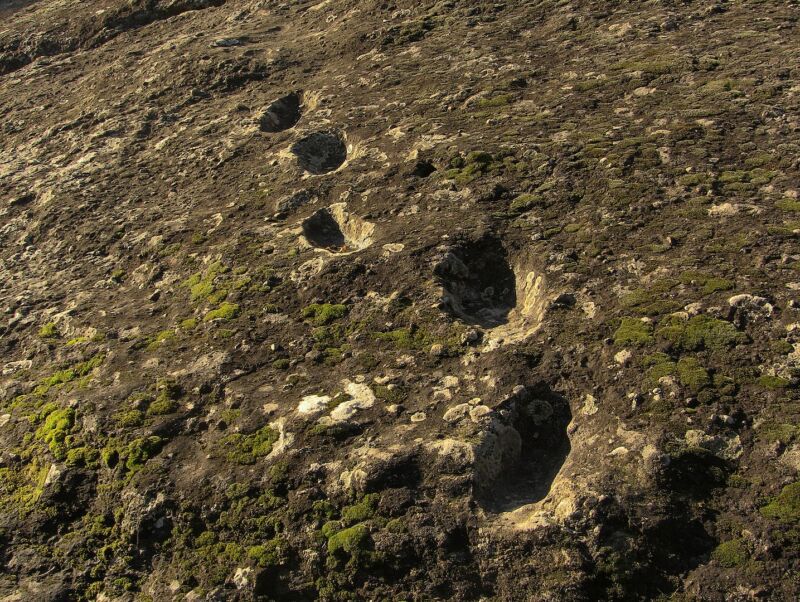Neanderthals’ relatives climbed an erupting volcano 350,000 years ago

Enlarge / Local residents call the tracks Ciampate del Diavolo, or the Devil's Path.
Roccamonfina volcano, about 60km northwest of Vesuvius, erupted violently around 350,000 years ago. Pyroclastic flows-deadly torrents of hot gas and volcanic ash-raced down the sides of the mountain. But within a few days, a small group of hominins trekked across the layer of ash and pumice that covered the steep mountainside. Recent analysis and some newly identified prints suggest that the intrepid (or reckless) hominins may have been Homo heidelbergensis who lived and hunted near the volcano.
Another layer of ash later covered the slope, sealing away at least 81 tracks until the early 1800s, when erosion revealed them to the local humans. The tracks record where at least five climbers, all with different foot sizes, walked down the steep, ash-covered hillside. One trail zigzags back and forth downhill, and you can easily picture climbers carefully working their way diagonally across the slope. Along another, more curving path, there are still handprints where the climbers reached out to steady themselves, and a slide mark reveals where one climber slipped.
The ash must have been cool enough to walk on but still soft enough to preserve tracks-very detailed ones, in a few cases. According to ichnologist Adolfo Panarello (of University of Cassino and Southern Latium) and his colleagues, that must have happened within a few days of the pyroclastic flow; Roccamonfina may even still have been erupting. In the 1800s, people living around the now-extinct volcano were sure that only the devil could have left those tracks.
Read 12 remaining paragraphs | Comments